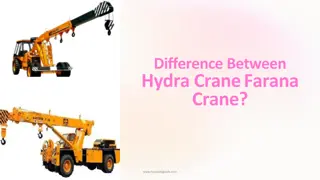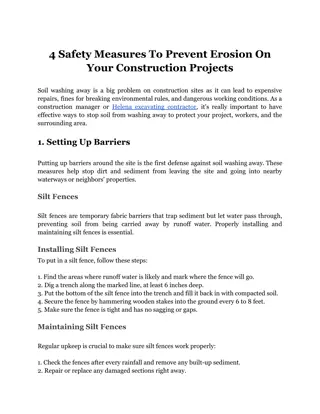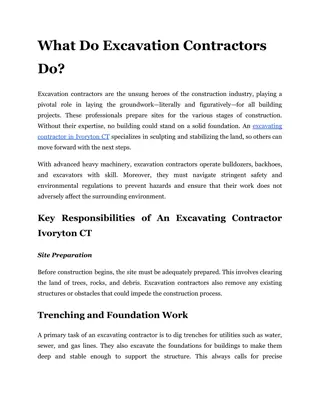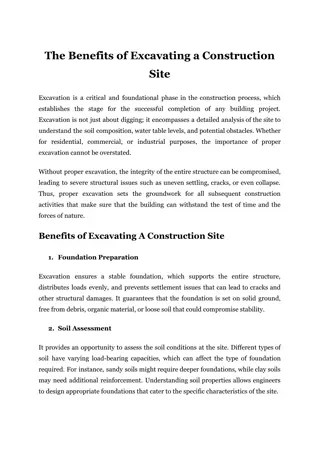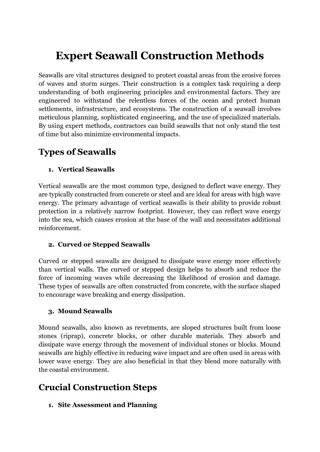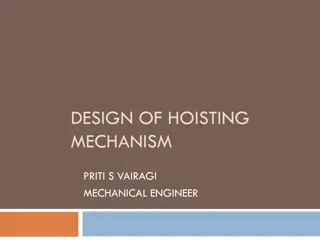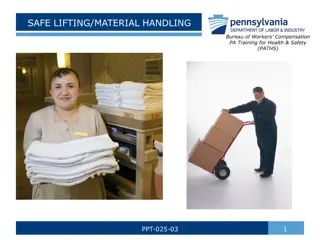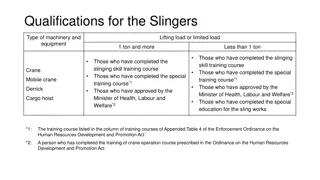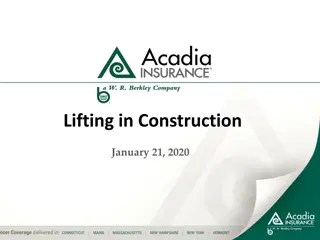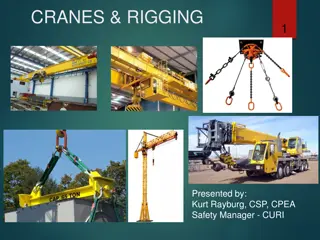Excavating and Lifting: Cranes in Construction
Explore the world of cranes in construction, from heavy lift cranes to tower cranes. Learn about their components, capabilities, and use in building projects. Discover how mobile telescoping boom cranes and tower cranes revolutionize lifting operations on-site, with a focus on safety and efficiency.
Download Presentation

Please find below an Image/Link to download the presentation.
The content on the website is provided AS IS for your information and personal use only. It may not be sold, licensed, or shared on other websites without obtaining consent from the author.If you encounter any issues during the download, it is possible that the publisher has removed the file from their server.
You are allowed to download the files provided on this website for personal or commercial use, subject to the condition that they are used lawfully. All files are the property of their respective owners.
The content on the website is provided AS IS for your information and personal use only. It may not be sold, licensed, or shared on other websites without obtaining consent from the author.
E N D
Presentation Transcript
Chapter 3 Excavating and Lifting Part 3
3-7 CRANES Heavy Lift Cranes Tower Cranes Job Management
3-7 CRANES Cranes are primarily used for: lifting, lowering, and transporting loads. They move loads horizontally by swinging or traveling. Most mobile cranes consist of a carrier and superstructure equipped with a boom and hook. as illustrated in Figure 3-22.
3-7 CRANES The current trend toward the use of hydraulically operated equipment includes hydraulically powered telescoping boom cranes. The mobile telescoping boom crane is capable of lifting loads to the top of a 24- story building. As shown in Figure 3-23
FIGURE 3-23: Large mobile hydraulic crane with telescoping boom. (Courtesy of Grove Worldwide)
Figure 3-27. Crane with ring attachment. (Courtesy of Maintowoc)
3-7 CRANES Tower Cranes Another special type of crane is the tower crane, illustrated in Figure 3-27. The tower crane is widely used on building construction projects because of: its wide operating radius and almost unlimited height capability.
FIGURE 3-27: Tower crane on a building site. (Courtesy of Potain Tower Cranes, Inc.)
3-7 CRANES Tower Cranes Major types of tower cranes include (Figure 3-28): horizontal jib (or saddle jib) cranes, luffing boom cranes, and articulated jib cranes Thus, such Tower cranes can be operated in either the horizontal or luffed position.
3-7 CRANES Comparison between the 3 types: luffing boom (inclined boom) models (see Figure 14-8) have the ability to operate in areas of restricted horizontal clearance not suitable for horizontal jib cranes with their fixed jibs and counterweights. Articulated jib cranes are able to reposition their hinged jibs to convert excess hook reach into added hook height.
3-7 CRANES Types of tower crane by method of mounting include: static (fixed mount) tower cranes, rail-mounted tower cranes, mobile tower cranes and climbing cranes.
3-7 CRANES Climbing cranes: are supported by completed building floors and are capable of raising themselves from floor to floor as the building is erected. Most tower cranes incorporate self-raising masts. Some specialized types of lifting equipment used in steel construction are described in Chapter 14.
FIGURE 3-30: Self-raising tower crane mast. (Courtesy of FMC Construction Equipment Group)
3-7 CRANES The major factor controlling the load that may be safely lifted by a crane is: 1. its operating radius (horizontal distance from the center of rotation to the hook). Some other factors: 2. the position of the boom in relation to the carrier, 3. whether or not outriggers (beams that widen the effective base of a crane) are used, 4. the amount of counterweight, and 5. the condition of the supporting surface.
3-7 CRANES Safety regulations: limit maximum crane load to a percentage of the tipping load (load that will cause the crane to actually begin to tip). Notice that hook blocks, slings, spreader bars, and other load-handling devices are considered part of the load and their weight must be included in the maximum safe load.
3-7 CRANES A standard method of rating the capacity of mobile cranes: has been adopted by the PCSA Bureau of the Construction Industry Manufacturers Association (CIMA). Under this system, a nominal capacity rating is assigned which indicates the safe load capacity (with outriggers set) for a specified operating radius usually 12 ft (3.6 m) in the direction of least stability.
3-7 CRANES Job Management A number of attachments besides the basic hook available to assist the crane in performing construction tasks. Several of these attachments are illustrated in Figure 3-31.
FIGURE 3-31: FIGURE 3-28 Lifting attachments for the crane. [Permission to reproduce this material has been granted by the Power Crane & Shovel Assn. (PCSA), a bureau of the Construction Industry Manufacturers Assn. (CIMA).Neither PCSA nor ClMA can assume responsibility for the accuracy of the reproduction.]
3-7 CRANES Among these attachments, concrete buckets, slings, and special hooks are most often used in construction applications. High-voltage lines present a major safety hazard to crane operations.
3-7 CRANES U.S. Occupational Safety and Health Act (OSHA) regulations: prohibit a crane or its load from approaching closer than 10 ft (3 m) to a high-voltage line carrying 50 kV or less. An additional 0.4 in. (1 cm) must be added for each kilovolt over 50 kY.
3-7 CRANES These safety clearances must be maintained: unless the line is deenergized and visibly grounded at the work site, or unless insulating barriers not attached to the crane are erected which physically prevent contact with the power line. Crane accidents occur all too frequently in construction work, particularly when lifting near-capacity loads and when operating with long booms.
3-7 CRANES Some suggestions for safe crane operations include the following: 1. Carefully set of outriggers on firm supports. 2. The crane base must be level. Safe crane capacity is reduced as much as 50% when the crane is out of level by only 3oand operating with a long boom at minimum radius.
3-7 CRANES 3. Use a communications system or hand signals when the crane operator cannot see the load at all times. Make sure that all workers involved in the operation know the hand signals to be used. 4. Provide tag lines (restraining lines) when there is any danger due to swinging loads. 5. Ensure that crane operators are well trained and know the capability of their machines. 6. Check safe-lifting-capacity charts for the entire range of planned swing before starting a lift. Use a load indicator if possible.




